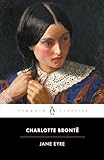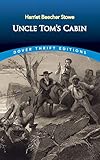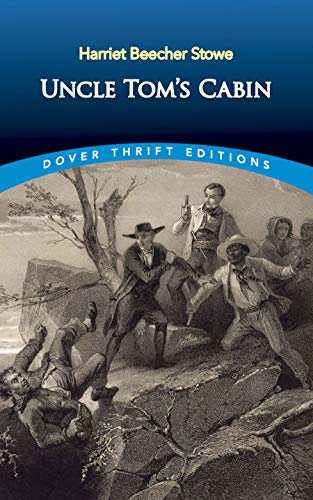It’s easy to buy into the classic image of the isolated female author: the eccentric Brontë sisters, wandering the moors; lofty George Eliot, sequestered in her London villa; a melancholic Virginia Woolf, loading her pockets with stones before stepping into the River Ouse. Male writers, on the other hand, often come in pairs: Fitzgerald and Hemingway on their riotous drinking sprees, Wordsworth and Coleridge hiking together through the Lakeland hills, Byron and Shelley encouraging each other’s sexual escapades.
As two modern-day writers, we’ve long found it intriguing that legendary male authors are cast as social creatures while their female counterparts are remembered as cloistered figures. We became close friends more than a decade-and-a-half ago when we were taking our first tentative steps on the long path to publication. In the years since, we’ve supported each other every step of the way: commenting on countless drafts, sharing details about literary agents and competition deadlines, and offering a sympathetic ear when the going got tough. Our experiences as struggling young writers suggested to us that history’s best-known female authors would also have welcomed a literary friend, especially, perhaps, during those difficult early stages of their careers.
But if these women had enjoyed relationships like ours, we realized that such bonds had rarely made it into the annals of literary history. And so, our interest piqued, we set out to investigate.
The case of Jane Austen particularly captured our imagination. She devoted 24 years to writing before securing her first publishing deal—a feat of endurance that put our own experiences into perspective. Could she have forged a friendship with a fellow writer, we wondered, who gave her the strength to keep going?
A fleeting reference in a biography provided the first clue to a hidden creative alliance that would eventually take us to old census records, volumes of unpublished diaries, and our discovery of two previously unknown Austen family documents. It turned out that Anne Sharp, a governess to Austen’s niece, and a household playwright, was a dear friend to Austen. Despite the gulf in their social positions, their shared status as amateur writers functioned, for a time, as a kind of leveler. Ignoring the raised eyebrows of Austen’s relatives, the two women enjoyed lengthy conversations, acted together in one of Sharp’s theatricals, and went so far as taking a six-week vacation together.


 By the time a publisher finally brought out Sense and Sensibility in 1811, Austen had been working on the novel intermittently for 16 years. Even after Austen’s books had become fêted by high society, attracting admirers as powerful as the Prince Regent, she continued to value the insights of this unpublished working woman. When Emma came out in 1815, Austen set aside one of her 12 precious presentation copies for Sharp—the only friend she singled out for such an honor. But Austen continued to seek Sharp’s appraisals, and the governess remained happy to oblige. While sharing her delight in the character of Mr. Knightly, for instance, Sharp admitted that she was not convinced by Jane Fairfax, who dreads the future mapped out for her as a governess. It’s a telling criticism, since Sharp was so well placed to judge. On a later occasion, when Austen asked for feedback on Mansfield Park, Sharp again summed up her thoughts on its strengths and weaknesses. “As you beg me to be perfectly honest,” she concluded, “I confess I prefer P. & P.”—a view shared by many readers over the centuries to come.
By the time a publisher finally brought out Sense and Sensibility in 1811, Austen had been working on the novel intermittently for 16 years. Even after Austen’s books had become fêted by high society, attracting admirers as powerful as the Prince Regent, she continued to value the insights of this unpublished working woman. When Emma came out in 1815, Austen set aside one of her 12 precious presentation copies for Sharp—the only friend she singled out for such an honor. But Austen continued to seek Sharp’s appraisals, and the governess remained happy to oblige. While sharing her delight in the character of Mr. Knightly, for instance, Sharp admitted that she was not convinced by Jane Fairfax, who dreads the future mapped out for her as a governess. It’s a telling criticism, since Sharp was so well placed to judge. On a later occasion, when Austen asked for feedback on Mansfield Park, Sharp again summed up her thoughts on its strengths and weaknesses. “As you beg me to be perfectly honest,” she concluded, “I confess I prefer P. & P.”—a view shared by many readers over the centuries to come.
In 1817, Austen would pen from her sickbed her last ever letter to this “excellent kind friend.” After Austen’s death, Sharp received three deeply personal mementoes: a pair of Austen’s belt clasps, her silver needle, and a lock of her hair. And yet, when, half a century later, the great author’s descendants penned her first full biography, they excluded even a single mention of Sharp.
By expunging any trace of this class defying friendship, Austen’s relatives maintained their carefully crafted image of her as a conservative maiden aunt, devoted above all else to kith and kin. This kind of omission is all too common. The important literary friends of Charlotte Brontë, Eliot, and Woolf have all suffered similar fates.
 The Brontë sisters are rarely envisaged away from their father’s moorland parsonage, but Charlotte in fact ventured far from her Yorkshire home. In the early 1840s, the 25-year-old—encouraged by her old boarding school friend, the future feminist author Mary Taylor—traveled to live and study in Brussels. Taylor, who believed in female financial independence, was certainly a force to be reckoned with. She pushed Brontë to pursue her dreams of publication, and ultimately shaped the radical elements of her friend’s novels such as Jane Eyre and Shirley. Taylor’s important impact on her friend’s career, however, is rarely acknowledged.
The Brontë sisters are rarely envisaged away from their father’s moorland parsonage, but Charlotte in fact ventured far from her Yorkshire home. In the early 1840s, the 25-year-old—encouraged by her old boarding school friend, the future feminist author Mary Taylor—traveled to live and study in Brussels. Taylor, who believed in female financial independence, was certainly a force to be reckoned with. She pushed Brontë to pursue her dreams of publication, and ultimately shaped the radical elements of her friend’s novels such as Jane Eyre and Shirley. Taylor’s important impact on her friend’s career, however, is rarely acknowledged.

 The studious neglect of Eliot’s literary friendship with Harriet Beecher Stowe is even more surprising given the towering stature of each author. Despite never having the opportunity to meet, the two literary legends maintained an 11-year, transatlantic correspondence that came to an end only with Eliot’s death in 1880. In deeply personal missives, the two discussed their families, scandals that befell them, and, of course, their work—with Eliot’s final novel Daniel Deronda bearing the imprint of Stowe’s whirlwind bestseller, Uncle Tom’s Cabin. But this historically important alliance has been seriously overlooked by biographers.
The studious neglect of Eliot’s literary friendship with Harriet Beecher Stowe is even more surprising given the towering stature of each author. Despite never having the opportunity to meet, the two literary legends maintained an 11-year, transatlantic correspondence that came to an end only with Eliot’s death in 1880. In deeply personal missives, the two discussed their families, scandals that befell them, and, of course, their work—with Eliot’s final novel Daniel Deronda bearing the imprint of Stowe’s whirlwind bestseller, Uncle Tom’s Cabin. But this historically important alliance has been seriously overlooked by biographers.
Unlike the literary allies of Austen, Brontë, and Eliot, Katherine Mansfield’s name has frequently been paired with Woolf’s—but for all the wrong reasons. While they regarded each other as important friends, the competitive nature of their relationship has led to the widespread assumption that they were sworn enemies. Woolf’s burning literary drive, it is too often assumed, must have extinguished the possibility of friendship with another ambitious woman.
By contrast, all the great male writing partnerships involved large doses of rivalry and yet the likes of Coleridge and Wordsworth, Shelley and Byron, and Hemingway and Fitzgerald are regarded as rambunctious comrades.
When the two of us began our research, we were propelled by curiosity about whether our literary heroines had female writer friends at all. But, having soon discovered that behind every great woman was another woman, our focus shifted to the question of why these crucial influences are so little known.
We initially wondered whether these writers themselves had contributed to this obscurity by guarding their privacy—an understandable stance in the days when a woman could court controversy simply by attempting to publish her words. But, through the process of uncovering a veritable treasure trove of female alliances, we came to the conclusion that there are also more troubling reasons for the disregard shown towards these crucial relationships.
Persistent images of isolation can be used to weaken female power by giving the impression that there are no tried-and-tested models of intellectual collaboration between women. A one-off genius, set apart, is an aberration who poses little threat to centuries of patriarchy—as is the ambitious woman, cast as the enemy of her peers. Especially in today’s uncertain climate—when women are fighting for control over their own bodies, and when their contributions are so often dismissed—we must resist such insidious tactics of divide and rule. The rich history of sisterhood offers a shaft of light during dark times: it is imperative to turn to the example of female forebears—women who always knew that they could best achieve greatness by aligning themselves with other women.









